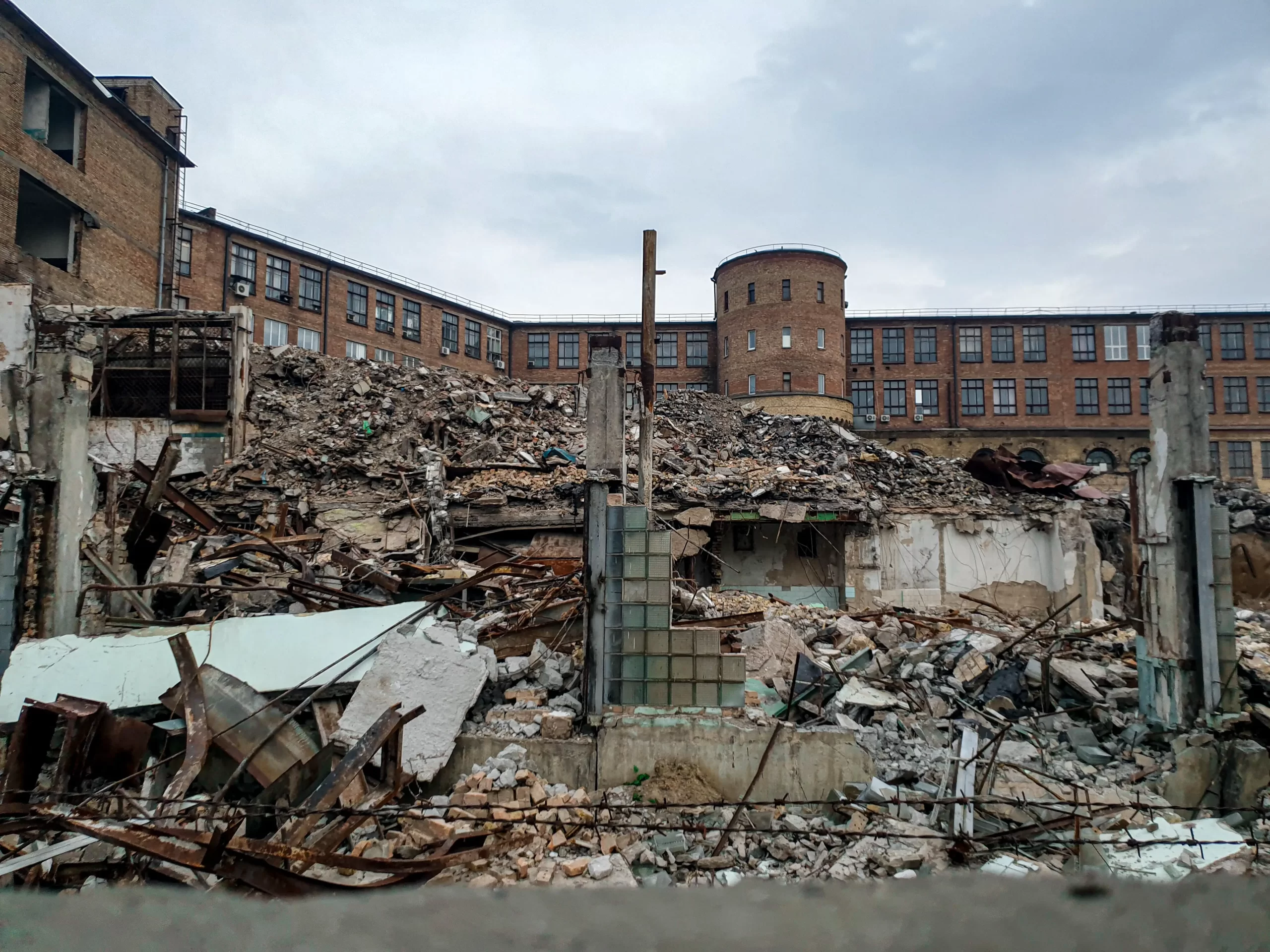2023’s Deadliest Natural Disasters: A Year of Unprecedented Tragedy and the Power of Prevention.
Introduction:
In the annals of history, the year 2023 will forever be etched with anguish and resilience. It was a year when the very Earth seemed to roar in anger, unleashing a relentless series of natural disasters that left scars upon the soul of our planet. From the trembling ground beneath our feet to the furious winds and raging waters, the world bore witness to nature’s unyielding power.
As we embark on this journey, our hearts ache for the communities torn asunder by these cataclysmic events. The stories of survival and loss serve as a stark reminder of our vulnerability in the face of Mother Nature’s fury. Yet, in the darkest of hours, the human spirit has shown its indomitable strength, shining like a beacon of hope amid the chaos.
In this blog, we embark on a solemn mission—to honor the memory of those who perished, to pay tribute to the resilience of survivors, and to explore the transformative potential of cutting-edge technologies. We look back upon the haunting toll exacted by these disasters, acknowledging the pain, suffering, and disruption they left in their wake.
But our journey doesn’t end in sorrow; it extends into the realm of innovation and hope. As we delve into the grim toll of these disasters, we will also cast our eyes toward a brighter horizon, one where innovative solutions offered by HQE and SiRcom could have potentially mitigated the impact, saving lives, minimizing damage, and offering a glimmer of solace to communities facing the unimaginable.
Join us on this poignant exploration of nature’s fury, human resilience, and the promise of advanced technologies to build a safer and more resilient future for all.
Recap of 2023’s Deadliest Natural Disasters:
Earthquake Takes More Than 55,000 Lives in Turkey and Syria – February 2023:
The earthquake that laid waste to Turkey and Syria in February 2023 was nothing short of a biblical catastrophe. In the silent hours of that fateful morning, a monstrous 7.8-magnitude quake shattered the earth, leaving in its wake a trail of unimaginable destruction. The world watched in collective horror as the death toll soared, eventually claiming the lives of more than 55,000 people. The humanitarian crisis that followed was as unrelenting as the tremors themselves, with the Syrian region, already battered by years of strife, brought to its knees.
The humanitarian crisis that unfolded was compounded by the already fragile state of the Syrian region, which had been grappling with a myriad of crises for years. The aftermath left communities shattered, infrastructure in ruins, and survivors struggling to cope with the trauma.
Estimated Reconstruction Cost: Billions of dollars, with long-term economic implications for the region.
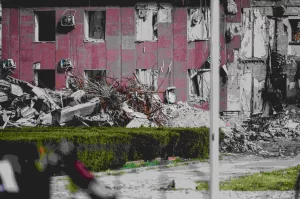
Storm Daniel Kills at Least 4,352 People in Libya – September 2023:
In the late summer of that fateful year, Libya’s Derna bore witness to the fury of Storm Daniel. This relentless tempest unleashed a torrent of rains that transformed the city into a waterlogged battleground. The two dams that guarded the city’s fragile existence crumbled, and in their wake, at least 4,352 lives were lost, with thousands more swallowed by the unforgiving floodwaters. As the city grappled with the aftermath, charges of negligence and mismanagement echoed through the halls of local government, underscoring the high stakes of disaster preparedness.
The catastrophe exposed the vulnerabilities of the region’s disaster preparedness and response mechanisms. Local officials faced charges of negligence and mismanagement, underscoring the importance of robust emergency strategies.
Estimated Reconstruction Cost: Staggering, with long-term impacts on Libya’s infrastructure and economy.
Source: usaid.gov
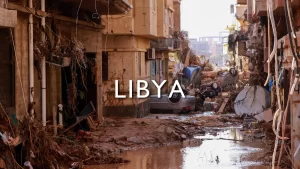
Earthquake Kills 2,946 in Morocco – September 2023:
Morocco, a nation unaccustomed to the wrath of earthquakes, was thrust into chaos by a seismic event of unparalleled magnitude. A 6.8-magnitude quake shook the land, claiming 2,946 lives and injuring countless others. It was an extraordinary catastrophe that demanded an extraordinary response, calling for enhanced seismic resilience and building standards.
The earthquake highlighted the pressing need for enhanced seismic resilience and building standards in regions prone to such disasters. The aftermath called for an urgent reassessment of Morocco’s disaster mitigation strategies.
Estimated Reconstruction Cost: Billions of dollars, with a focus on seismic-resistant infrastructure.
Source: CNN
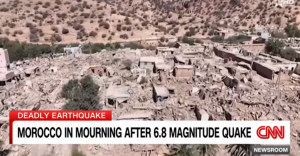
Earthquake in Afghanistan Kills at Least 1,480 – October 2023:
Afghanistan, a country already burdened by a tumultuous history, faced its own reckoning in October 2023. A 6.3-magnitude earthquake shattered the lives of at least 1,480 people, with a chilling majority of them being women and children. This tragic episode highlighted the vulnerability of marginalized groups in times of crisis and underscored the critical need for effective disaster preparedness, especially in regions with limited resources.
Afghanistan, located at the crossroads of tectonic plates, is no stranger to seismic activity. However, the devastation served as a stark reminder of the need for effective disaster preparedness, particularly in regions with limited resources.
Estimated Reconstruction Cost: Significant, with a focus on rebuilding homes and critical infrastructure.
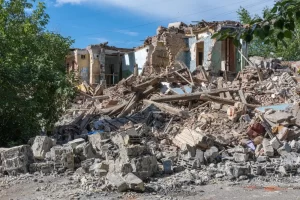
Tropical Cyclone Freddy Kills at least 679 in Malawi – March 2023:
Malawi, nestled in the heart of Africa, bore the brunt of Tropical Cyclone Freddy’s fury in March. For six agonizing days, heavy rains unleashed havoc, claiming the lives of at least 679 people, though the actual toll was likely much higher. As President Lazarus Chakwera pleaded for international aid, the catastrophe revealed the terrifying toll of climate change on vulnerable regions, prompting a global cry for climate action.
The catastrophe in Malawi highlighted the devastating impact of climate change on vulnerable regions, prompting a global call for climate action.
Estimated Reconstruction Cost: Extensive, with a focus on disaster-resilient infrastructure.
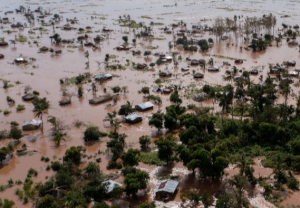
Flooding in the Democratic Republic of the Congo Kills at Least 438 – May 2023:
Early May 2023 witnessed the Democratic Republic of the Congo drowning under relentless rainfall, resulting in flash floods and mudslides that claimed the lives of at least 438 people, leaving thousands more missing and homeless. This disaster underlined the desperate need for improved early warning systems and disaster preparedness in regions prone to heavy rainfall.
Estimated Reconstruction Cost: Substantial, with a focus on disaster mitigation measures.

Earthquake Claims at Least 157 Lives in Nepal – November 2023:
Nepal, a land etched with the grandeur of the Himalayas, trembled once again in November 2023. A 5.6-magnitude earthquake sent shockwaves through the western regions, claiming at least 157 lives. Nepal had already endured a devastating earthquake in 2015, and this disaster served as a stark reminder of the ever-present seismic threats and the urgency of building resilience.
The disaster served as a reminder of the ongoing seismic threats in the region and the importance of resilience-building efforts.
Estimated Reconstruction Cost: Significant, with a focus on seismic-resistant infrastructure.

Cyclone Mocha Kills at Least 145 in Myanmar – May 2023:
Myanmar, susceptible to the fury of cyclones, faced the onslaught of Cyclone Mocha in May 2023. With winds reaching up to 130 mph, this tempest claimed the lives of at least 145 people, disproportionately affecting the Rohingya minority group. Myanmar grappled with disaster response and recovery, underscoring the need for international assistance and resilient infrastructure.
Estimated Reconstruction Cost: Extensive, with a focus on resilient infrastructure and disaster management.
Source: NASA
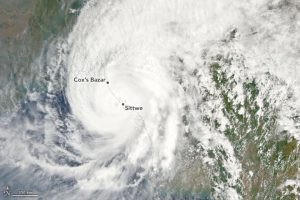
Heavy Rain and Flooding Kill at Least 129 in Rwanda – May 2023:
In May 2023, Rwanda, known as the “Land of a Thousand Hills,” bore witness to the destructive power of torrential rains. The heavy rainfall pounded the northern and western regions, resulting in the destruction of 5,000 homes and the tragic loss of at least 129 lives. Rwanda’s vulnerability to landslides during the rainy season laid bare the need for comprehensive disaster risk reduction strategies.
Estimated Reconstruction Cost: Significant, with an emphasis on disaster-resilient housing.

Wildfire Kills at Least 100 in Hawaii – May 2023:
Finally, the idyllic landscapes of Hawaii, often synonymous with paradise, were plunged into a nightmare of their own making in May 2023. A combination of drought and wind gusts fueled wildfires that raged for three agonizing days, claiming the lives of at least 100 people. Hawaii’s vulnerability to wildfires called for enhanced fire prevention measures and community preparedness, as the islands faced long-term environmental recovery efforts.
Estimated Reconstruction Cost: Billions of dollars, with long-term environmental recovery efforts.
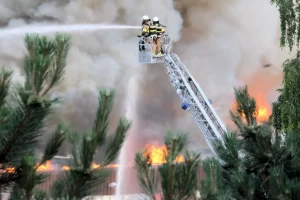
These ten natural disasters of 2023, each unique in its own right, shared a common thread of devastation, loss, and the urgent need for resilience. As we reflect on the human and economic costs of these disasters, we also turn our attention to the innovative technologies and solutions that could have potentially mitigate their impact. In the sections to follow, we will explore how leaders in the field of disaster preparedness and response offer the tools and capabilities that could make a difference in the face of nature’s fury.
HQE: The Power of Preparedness:
As we navigate through the annals of 2023’s deadliest natural disasters, we cannot help but contemplate the impact of innovative capabilities offered by HQE. These solutions have the potential to alter the course of these calamities, providing a glimmer of hope in times of despair.
Early Warning Systems:
HQE’s integration to outdoor warning sirens transcend their towering presence; they embody the silent guardians of communities. These high-powered speaker arrays stand ready to emit critical emergency signals, ranging from tornado warnings to earthquake notifications. Imagine, for instance, the earthquake that struck Turkey and Syria in February 2023. HQE’s early warning sirens integration could have heralded vital seconds, if not minutes, of advance notice. Residents could have sought shelter, emergency services could have been better prepared, and panic might have been averted.

Communication Networks:
HQE’s SMART Alert Software, also known as SiSA, represents a paradigm shift in mass communication during crises. SiSA possesses the remarkable ability to seamlessly interface with various mass notification systems, encompassing outdoor sirens, indoor public address systems, and FEMA IPAWS. Picture a scenario in Libya during Storm Daniel, where SiSA could have orchestrated the timely dissemination of alerts to residents, facilitating an organized evacuation and potentially curtailing casualties. SiSA’s unified communication approach ensures the swift flow of information, mitigating confusion and anxiety.

Disaster Management Tools:
HQE champions the significance of real-time data and situational awareness. Our smart electronic mass notifications (EMNS) solution, driven by machine learning and artificial intelligence, stands as a linchpin in effective disaster management. Through seamless integration with SiSA, a unified life safety and security system can emerge, streamlining emergency responses and resource allocation. This level of coordination fundamentally enhances the ability to save lives and safeguard communities.
Envision these natural disasters anew, now with the potency of HQE’s capabilities in the equation:
The earthquake in Turkey and Syria, armed with state-of-the-art early warning sirens integrated by HQE, would have broadcasted their imminent arrival with remarkable precision. HQE’s integration capabilities with advanced seismic sensors and AI algorithms that can detect the initial tremors and predict the scale of the impending quake. This would have offered schools, hospitals, and entire communities those invaluable extra moments to enact earthquake preparedness plans. Imagine children safely sheltered under desks, medical teams poised to respond, and buildings designed to withstand the tremors – all thanks to these cutting-edge technologies.
In Libya, as the ominous storm clouds gathered and Storm Daniel loomed, SiSA would have orchestrated the dispatch of timely alerts to residents. SiSA is not merely an alert system; it’s a guardian angel in the digital realm. It would have sent out alerts to every corner of the city, not only warning residents of the impending disaster but also providing crucial information on evacuation routes, shelter locations, and emergency contact numbers. Simultaneously, SiSA would have equipped emergency services with real-time data, enabling them to coordinate their response efficiently. Lives could have been saved, and the chaos in the aftermath minimized.

In Morocco, the earthquake, no matter how severe, could have greatly benefited from an early warning system. The expertise in seismic monitoring and HQE’s integration capabilities would have diminished casualties substantially. These technologies would have ensured that vulnerable structures adhered to seismic building standards and that people received alerts in advance. Picture buildings reinforced with seismic engineering, and communities well-prepared for the inevitable, thanks to these innovative solutions.
Afghanistan’s earthquake, as devastating as it was, might have witnessed more lives spared with the deployment of an early warning system. HQE’s geospatial intelligence combined with their capabilities to integrate to redundant communication infrastructure could have ensured that the warning reached every corner of the affected region. Enhanced coordination of emergency responses, facilitated by SiSA, would have streamlined efforts and saved precious time, ultimately translating into lives saved.
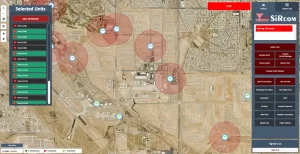
Malawi’s encounter with Cyclone Freddy might have unfolded differently with early warnings powered by HQE’s integration capabilities to weather forecasting technology. These warnings would have allowed communities to brace and evacuate, thus preserving innumerable lives. SiSA’s ability to integrate as a single dashboard disaster management system would have meant that every step of the evacuation was well-coordinated and informed, reducing chaos and uncertainty.
In the Democratic Republic of the Congo, an efficient communication network, bolstered by SiSA, would have ensured that more individuals received flood warnings. HQE’s satellite-based communication integration capabilities could have reached even the most remote areas, empowering people to seek refuge in a timely manner.
Nepal’s earthquake readiness could have been bolstered by early warning sirens equipped with the latest seismic monitoring technologies from HQE. These sirens would not only have alerted people but also educated them on how to react effectively during those critical moments. SiSA’s role would have been pivotal in disseminating educational content and facilitating emergency responses.
Myanmar’s Cyclone Mocha could have encountered improved resource coordination and emergency responses, thus mitigating its impact on the Rohingya minority. HQE’s geospatial analytics could have provided precise tracking of the cyclone’s path with their integration capabilities, allowing for targeted evacuations and resource allocation. SiSA’s mass notification capabilities would have kept affected communities well-informed and empowered.
Rwanda’s torrential rains could have met a more effective disaster management system, translating into more efficient evacuation and rescue efforts. HQE’s weather forecasting tools would have provided accurate predictions, while SiSA’s integration with emergency services would have facilitated rapid responses.
Hawaii’s wildfire crisis might have been substantially mitigated with an early warning system in place. This can be achieved for any fires through SiRcom integrated Fire Detection Sensors, coupled with SiSA’s mass notification capabilities, would have granted residents the ample time they needed to evacuate safely. The devastation could have been reduced, and lives and property saved.
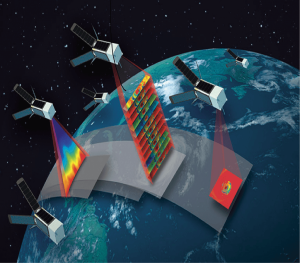
In each of these scenarios, HQE’s integration and SiSA could have served as pivotal assets in curbing the loss of life and the economic toll exacted by these disasters. These capabilities extend beyond the realm of mere tools; they represent the promise of a safer, more resilient future for communities worldwide. As we gaze toward the horizon, it becomes increasingly clear that preparedness is paramount. Investment in these innovative solutions becomes not just a choice but a moral imperative—a commitment to safeguard our most precious resource: human lives.
As we reflect on the tragedies of 2023, one truth is crystal clear: proactive measures, early warnings, and efficient communication networks are the linchpins of disaster resilience. HQE stands at the forefront with their cutting-edge technologies, offering a path to reduce the toll of such catastrophes.
In tribute to the lives lost, let us not merely mourn but also act. We must advocate for the integration of these advanced solutions into our disaster management strategies. The memory of those we lost should ignite our dedication to building a safer, more resilient future.
Today, we issue a collective plea. Together, let us champion preparedness, minimize the impact of nature’s fury, and forge a more secure tomorrow. It’s a commitment that transcends words—a testament to our resilience in the face of adversity. Join us in this vital endeavor, where each of us plays a crucial role in creating a world better equipped to face the challenges that lie ahead.
HQE Systems is a certified Veteran Owned Company. For more information about HQE Systems Inc. and its emergency management, electronic security, and integration solutions, please visit www.hqesystems.com.

Contact: David Ditto (Early Warning Systems Subject Matter Expert)
Email: David.Ditto@hqesystems.com
Phone Number: (843) 872-7020
____________________
HQE Systems, Inc. | HQE is a Minority-Owned Service Disabled Veteran Owned Small Business (SDVOSB) providing full solutions for: Mass Notification Systems, Electronic Security Systems, Software Development Services, Contract Support, and Prototyping Services. As a brand-agnostic solutions provider, HQE prides itself in providing the BEST solution for the project. HQE possesses over 30+ factory certifications and reseller licenses to ensure our clients receive the highest quality service at the ideal budget. HQE can provide full design, installation, integrations, upgrades, and long-term maintenance support for any size and scope project.

